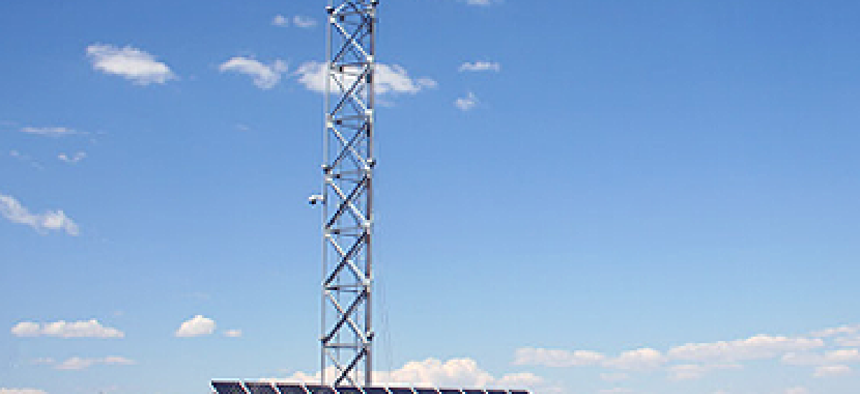Bill calls for a smart wall

New legislation by Texas Rep. Will Hurd would require DHS to assess technology options and develop a comprehensive plan for the border wall.

Integrated Fixed Surveillance Tower in Arizona (Photo by GAO)
New legislation set to be introduced by Rep. Will Hurd (R-Texas) would compel the Department of Homeland Security to create a "smart wall" by requiring DHS to assess technological solutions before building a physical barrier on the country’s southern border.
The Secure Miles with All Resources and Technology (SMART) Act, first reported by CNN on July 27, would mandate that DHS deploy technology where it is the best option and would prevent funding for construction until a comprehensive border strategy, including a cost estimate and justification, is submitted to Congress.
Hurd said the goal of the bill, which was expected to be introduced on July 27, is to reduce the multibillion-dollar price tag for President Donald Trump's proposed wall along the country's southern border.
He quoted estimates from Silicon Valley defense technology firm Anduril Industries, which said his proposal to use more technology would drop the border wall's costs down to $500,000 per mile from the current $24.5 million-per-mile estimate.
DHS Secretary John Kelly has said the Trump administration's push for a wall must include technology to support or even replace physical barriers in terrain where a wall is not practical.
However, Hurd, a longtime skeptic about the border wall, has been calling for technology-rich solutions that could provide more cost-effective and operationally efficient security, such as interlinked sensors, surveillance and other detection systems.
He told CNN that the U.S. border strategy has focused on big problem areas for too long -- including Tucson, San Diego, and the Rio Grande Valley in Texas -- sometimes at the expense of other areas. A so-called smart wall would be a cost-effective way to plan for the entire border, he said.
Hurd has been asking about technology options along the border for some time. His district in Texas includes 800 miles that snake along the Rio Grande River on the state's southern tip.
A July 25 hearing of the House Homeland Security Committee's Border and Maritime Security Subcommittee examined how technology could be used along the border. Hurd asked Customs and Border Protection officials about the kind of access agents in the field had to the surveillance and detection technology used in CBP's command centers. He said closer integration of communications and data was a critical part of border protection.
Scott Luck, acting deputy chief of the U.S. Border Patrol, told the panel he wanted the right mixture of technology that would most effectively assist his agents in their duties. He said his agency currently has stand-alone systems that do not communicate well with one another or with agents in the field.





